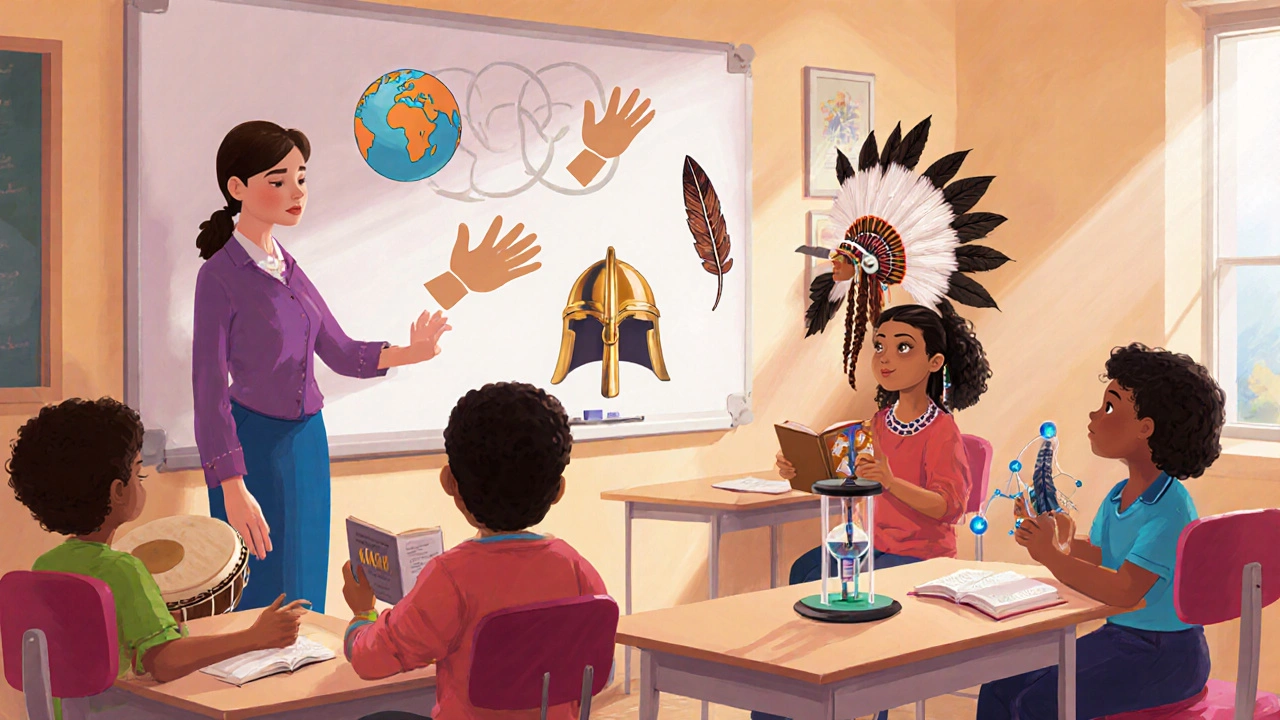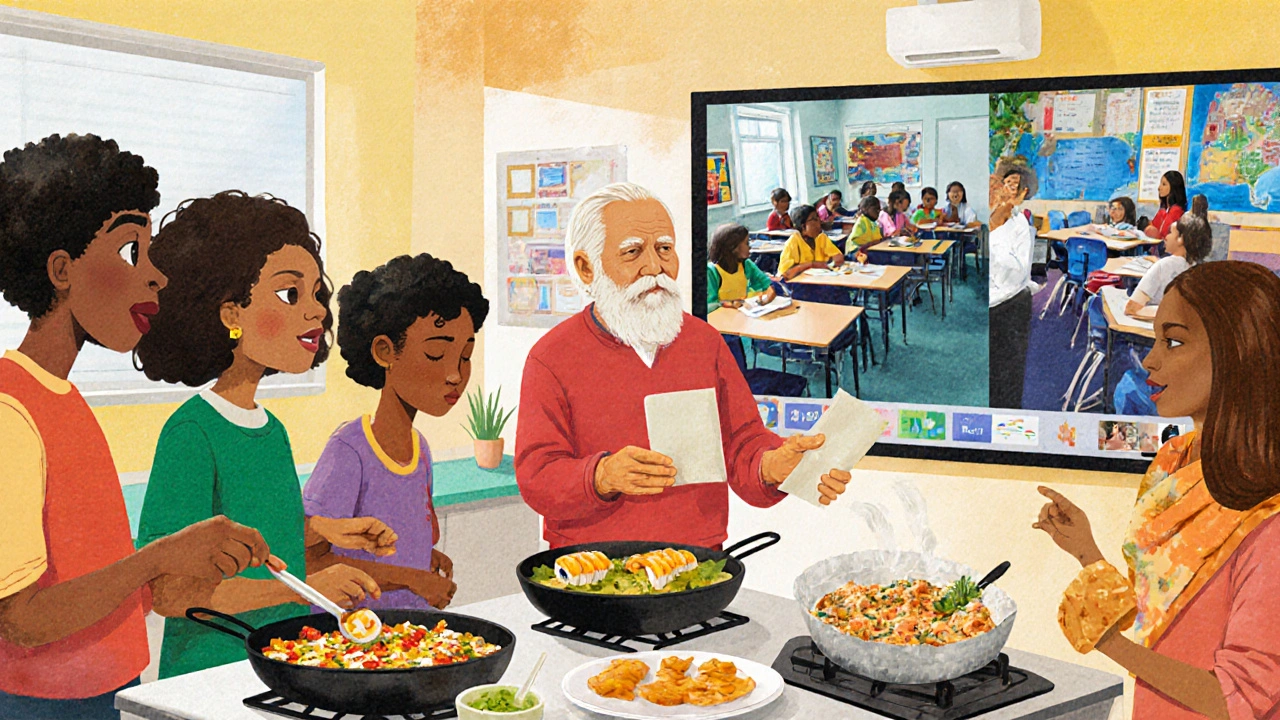Why Cultural Diversity Matters in High Schools

Diversity Strategy Calculator
Compare Diversity Initiatives
Select your school's situation to see which cultural diversity strategy would work best for you.
Recommended Strategy
Why This Strategy?
When Cultural Diversity is a set of varied cultural backgrounds, languages, traditions, and perspectives represented within a community becomes a daily reality in a High School a secondary education institution serving grades 9‑12, typically for ages 14‑18, the impact ripples through every classroom, hallway, and extracurricular activity. Students learn not just math or history; they learn how to navigate a world where differences are the norm. This article breaks down why that matters, how schools can turn diversity into a strength, and what pitfalls to avoid.
Key Takeaways
- Authentic representation of cultures improves academic outcomes and social skills.
- Curriculum, policies, and extracurriculars must all align to foster inclusion.
- Teachers need specific training to handle multicultural classrooms effectively.
- Community involvement bridges school learning with real‑world cultural exchange.
- Measurable equity metrics help schools track progress and adjust strategies.
How Diversity Boosts Learning
A Student an individual enrolled in secondary education, typically aged 14‑18 exposed to multiple viewpoints develops stronger critical‑thinking skills. For example, a study by the National Center for Education Statistics (2023) showed that classrooms with high cultural mix saw a 12% increase in collaborative problem‑solving scores. When a history lesson pits a Roman empire perspective against an indigenous American view, students must evaluate sources, question bias, and articulate their reasoning.
Teachers as Cultural Mediators
A Teacher a certified educator responsible for delivering curriculum and supporting student growth who understands cultural nuances can turn potential misunderstandings into teachable moments. Professional development that includes cultural competency modules has been linked to a 9% drop in disciplinary referrals. The key is providing teachers with concrete strategies-like using “cultural windows” to let students share personal narratives, or adopting inclusive language guidelines.
Embedding Diversity in the Curriculum
A well‑designed Curriculum the organized set of courses and content delivered by a school reflects the community it serves. Rather than tacking on a single “culture day,” schools integrate diverse authors, case studies, and examples across subjects. In English classes, students might read Maya Angelou alongside William Shakespeare; in science, they could explore traditional ecological knowledge from Indigenous peoples alongside modern genetics.

Policy Frameworks that Support Inclusion
Effective School Policy formal rules and guidelines governing school operations, behavior, and curriculum sets the tone for equity. Policies that mandate diverse hiring, enforce anti‑bias training, and require regular equity audits create a scaffold for day‑to‑day practice. For instance, a district in California adopted a “Cultural Equity Scorecard” that tracks representation in staff, course materials, and student clubs, leading to a 15% increase in minority student satisfaction within two years.
Community Partnerships Extend Learning
The Community the broader network of families, local businesses, cultural organizations, and civic groups surrounding a school acts as a living laboratory. When schools partner with local museums, cultural centers, or immigrant service agencies, students get authentic experiences-like cooking authentic dishes in a culinary class or interviewing elders for a social‑studies project. These collaborations reinforce that diversity isn’t a buzzword; it’s part of everyday life.
Measuring Equity and Progress
Data‑driven approaches keep schools honest. Tracking metrics such as graduation rates by ethnicity, participation in advanced courses, and disciplinary actions reveals hidden gaps. Schools that publicly share these dashboards and set improvement targets see faster progress. A simple equity checklist-covering representation, curriculum relevance, teacher training, and student voice-helps administrators pinpoint where to act.
Comparing Three Diversity Strategies
| Initiative | Core Focus | Typical Resources | Impact Indicator |
|---|---|---|---|
| Curriculum Integration | Embedding diverse perspectives into subjects | Teacher training, revised textbooks, lesson plans | Student engagement scores |
| Student Cultural Clubs | Providing student‑led spaces for cultural expression | Club advisors, event budgets, meeting spaces | Club participation rates |
| Community Partnership Programs | Linking school activities with local cultural institutions | Memorandums of understanding, transport, guest speakers | Number of joint projects completed |

Practical Steps for Schools Ready to Act
- Conduct an equity audit to map current representation across staff, curriculum, and student groups.
- Form a diversity steering committee that includes teachers, students, parents, and community leaders.
- Choose one pilot initiative-such as revising a history unit-to test and refine.
- Provide targeted professional development that includes real‑world case studies.
- Set measurable goals (e.g., increase minority student participation in AP courses by 10% in one year).
- Publish quarterly progress reports and adjust tactics based on feedback.
Common Pitfalls and How to Avoid Them
Many schools stumble when they treat diversity as a one‑off event. Tokenism-showing a single cultural artifact during a week‑long celebration-can feel insincere. To avoid this, embed cultural awareness into daily routines, not just special days. Another trap is overlooking language barriers; providing translation services for parent communications ensures families stay engaged. Finally, neglecting data leads to blind spots; regular surveys and transparent dashboards keep the effort accountable.
Looking Ahead: The Future of Inclusive Education
As our society becomes more interconnected, the skills cultivated by diverse schools-empathy, adaptability, cross‑cultural communication-will be essential in the workforce. Emerging technologies like virtual exchange platforms allow students to collaborate with peers worldwide, further enriching the cultural tapestry. Schools that prioritize authenticity today will produce graduates ready to lead in a globalized world.
Frequently Asked Questions
How can a high school start measuring cultural diversity?
Begin with a demographic survey of students, staff, and families. Pair that with an audit of curriculum content and extracurricular offerings. Use the data to create a baseline equity scorecard that can be updated each semester.
What low‑cost strategies work for schools with limited budgets?
Leverage community volunteers, partner with local cultural organizations for free workshops, and encourage student‑led clubs that require minimal funding. Online resources, such as open‑access journals and multicultural lesson‑plan repositories, also provide high‑impact content at no cost.
How does teacher training affect student outcomes?
Teachers who receive cultural competency workshops report higher confidence in handling diverse classrooms, which correlates with reduced disciplinary referrals and higher student engagement scores. In a pilot district, schools that completed a 20‑hour training saw a 7% rise in average GPA among underrepresented groups.
Can multicultural curricula meet state testing requirements?
Yes. Align multicultural content with existing standards by mapping diverse texts and case studies to required competencies. This approach enriches learning without compromising test preparation.
What role do parents play in fostering cultural diversity?
Parents can volunteer for cultural events, share their heritage through classroom presentations, and serve on diversity committees. Their involvement signals to students that cultural exchange is valued both at school and at home.